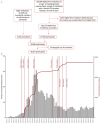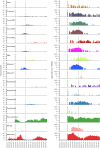Virus Monitoring in Denmark: A Community-Based Self-Sampling System to Surveil Respiratory Viruses and Associated Symptoms
- PMID: 40130741
- PMCID: PMC11934840
- DOI: 10.1002/jmv.70293
Virus Monitoring in Denmark: A Community-Based Self-Sampling System to Surveil Respiratory Viruses and Associated Symptoms
Abstract
This study presents findings captured in the first 1.5 years of the Virus Monitoring in Denmark (VMD) surveillance system. It describes trends in respiratory viruses, related symptoms, and participant demographics and behaviors. VMD used self-swabbing and self-reported symptoms to monitor respiratory viruses in the general population. Participants were recruited via digital invitations to a representative sample of the population or through workplaces. Symptomatic participants could self-swab and register their samples and report their symptoms via a dedicated smartphone web app. With 30 627 participants and 12 642 samples analyzed, VMD had a broad demographic representation. SARS-CoV-2 was the most frequently detected virus, with positivity rates peaking at over 50% in late 2023. Participants commonly self-swabbed because of fever, cough, and rhinorrhea, with influenza A linked to the highest median number of symptoms. Participants only provided samples after reaching a specific symptom threshold, and participation affected the health-seeking behaviors and work attendance of a few individuals. VMD continuously provided real-time insights into respiratory virus trends and symptomatology in the general non-healthcare-seeking population. Its accessibility - available to anyone with a Danish identification number, a smartphone, and an invitation - highlights its potential as a pandemic preparedness tool.
Keywords: eHealth; pandemic preparedness; public health surveillance; respiratory tract infections; self‐testing; symptom assessment.
© 2025 The Author(s). Journal of Medical Virology published by Wiley Periodicals LLC.
Conflict of interest statement
The authors declare no conflicts of interest.
Figures






References
-
- Sentinel surveillance , accessed December 17, 2024, https://www.ecdc.europa.eu/en/seasonal-influenza/surveillance-and-diseas....
-
- Statens Serum Institut , “De Offentlige Covid‐19‐Testcentre Lukker,” accessed December 12, 2024, https://www.ssi.dk/aktuelt/nyheder/2023/testcentre-lukker.
MeSH terms
LinkOut - more resources
Full Text Sources
Medical
Miscellaneous

